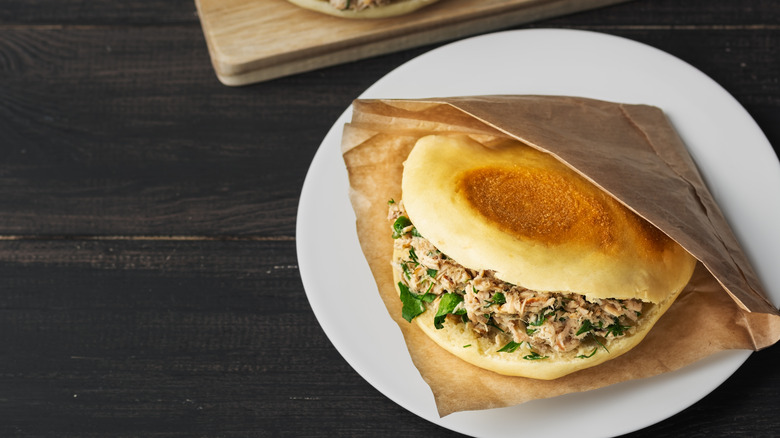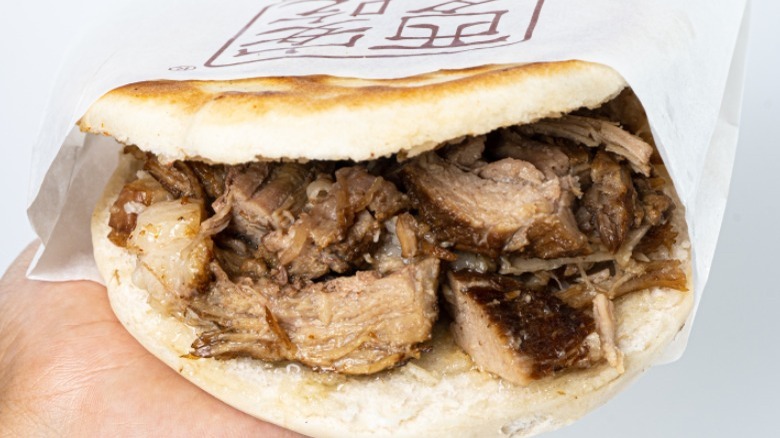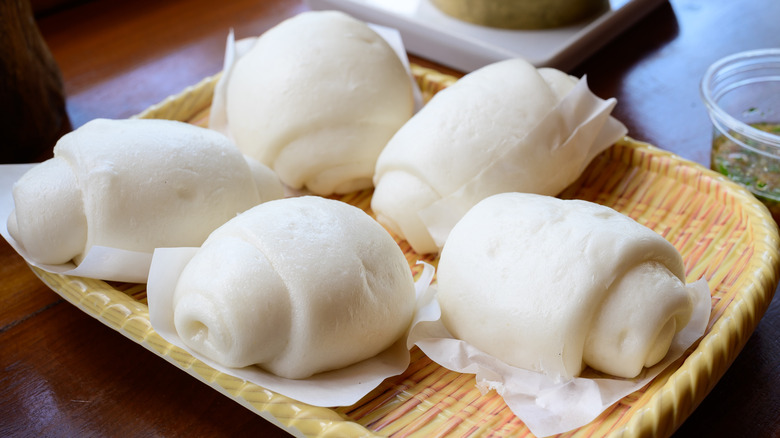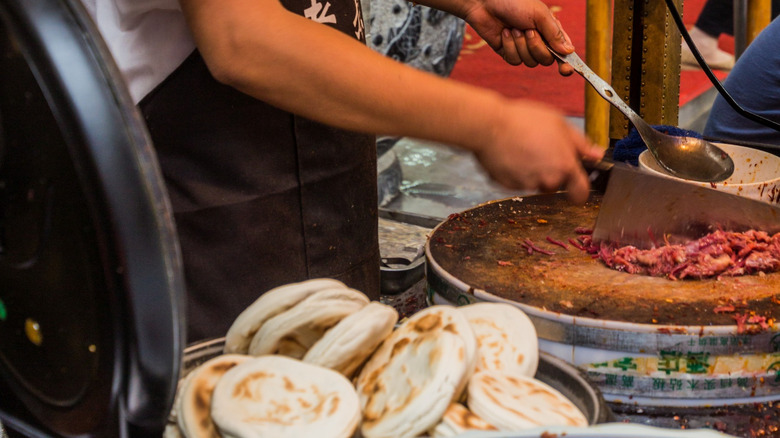Rou Jia Mo: China's Street Food Sandwich Filled With Braised Pork
For many, the mind associates tucking into a Chinese-food feast with using chopsticks — after all, the cuisine is usually chopped up into tiny enough pieces that no cutting is required, and a no-knife meal was appreciated by followers of the non-violent Confucian school of thought. But China is a massive country, with many diverse regional cuisines that feature a range of Chinese foods you must try at least once. This includes soups, snacks, and unique desserts like sticky rice cake (much more than just General Tso's Chicken).
Sometimes, you won't need the chopsticks either — you just need your hands and a good appetite to chow down on China's equivalent of the hamburger: the street food sandwich rou jia mo, which translates as "meat in a bun." But don't expect a sesame-seed-topped hamburger bun filled with a beef patty — the rou jia mo has a unique meat filling that dates back over 2000 years.
History of rou jia mo
While Western iterations of the all-American hamburger date back to the 1st century, rou jia mo (also spelled as one word, roujiamo) may predate Ancient Rome's "Isicia Omentata" by a couple hundred years. The Chinese were eating bread as early 221 to 206 BC, during the Qin Dynasty, and the meat filling of the rou jia mo dates to the Zhou Dynasty (1045 to 256 BC). While the exact invention date of rou jia mo is unclear, most agree that the Shaanxi province can claim the street treat as its own, even though its popularity has led to its happy consumption all over the vast country. A visit to the capital Xi'an wouldn't be complete without eating rou jia mo, where some locals compare a day without eating the food to not having eaten at all.
These days, rou jia mo is becoming an increasingly available Chinese food beyond the borders of the Middle Kingdom. For example, on the menu of the popular chain Xi'An Famous Foods, a version of rou jia mo is available as item B1, or a "Stewed Pork Burger."
How the rou jia mo is made and variations
Most rou jia mo will most likely be made with a pork filling, in which the meat is given a 5-star treatment of stewing in a broth seasoned with over 20 spices for a long time — we're talking hours, and for the strongest flavor punch, some even recommend cooking the meat a day before to really let the spices sink in. Some other methods use fewer spices to prepare the meat, but if you skimp on the spice you miss out on the flavor. Pork is common but is not the only protein used for rou jia mo: Muslim areas of Xi'an opt for beef or lamb instead of pork.
Either way, a delectable meat filling is then chopped with coriander and peppers and then presented in the mo, which is another Chinese term for mantou, also known as delicious bao or Chinese steamed buns. However, mo for rou jia mo can be steamed or baked, and is usually made with wheat flour that's stirred and traditionally baked in a clay oven. Other parts of China opt for frying to get the bun into shape. After assembly, the rou jia mo is ready to eat — no ketchup required.
How the rou jia mo is served and where to get it
Every rou jia mo street vendor operates in its own unique rhythm with its own style of stewing meat and baking the mo, but when visiting Xi'an, rou jia mo is usually served fresh and given to the hungry customer in a paper sack to be enjoyed on the spot. This handy clip on Youtube demonstrates the pure skill of fluffing open steaming mo buns before chopping up the stewed meat with scallions, sliding the rou jia mo into a paper sack, and then drizzling on some sauce to finish (warning, the video may make you very hungry).
If you can't make it to China, you can try to make your own rou jia mo by following along with Sohla El-Waylly, who makes a recipe from 200 BC. And if you can't make it through the wait of a recipe, you can head to a Xi'an Famous foods or try your luck at the nearest Chinese restaurant.



